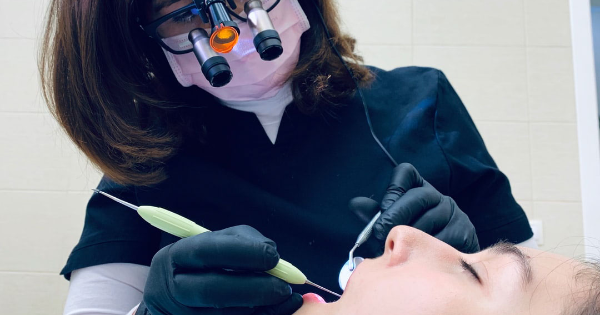INBRACE Lingual Braces: Are They the Right Option for You?
Posted on August 5, 2020
According to the American Dental Association, nearly 70% of people wearing braces are female, and the top reason for getting them is aesthetics. However, the look of traditional metal braces could dissuade adults from undergoing teeth straightening, even if they would like a straighter smile for aesthetic purposes. Fortunately, there are a couple of options that orthodontic specialists can offer that make treatment unnoticeable. While most people are familiar with Invisalign clear aligners, there is another lesser-known option called lingual braces. This system is composed of brackets and wires like traditional braces, but lingual braces are placed behind the teeth making them invisible when you talk or smile. This form of braces is often favored by adult patients who may be self-conscious about wearing traditional braces.
INBRACE Lingual Braces
INBRACE is the latest, most advanced form of lingual braces and can be used by orthodontic specialists to treat a host of issues easily and discretely. What separates INBRACE from other types of lingual braces is their ease, simplicity, and comfort.
Unlike other lingual braces that use wire anchored to brackets, INBRACE utilizes a slim fit ligation system which allows for healthy tooth movement with less friction. INBRACE is also computer designed to fit your teeth, making the treatment more effective and individualized. With each of the wires pre-formed for your mouth, the final outcome is more predictable and easier to achieve. This also helps reduce the number of wire changes, with only three to five changes needed on average.
INBRACE or Invisalign
For those considering teeth straightening for aesthetic purposes, Invisalign and lingual braces are some great options. While Invisalign is more well-known than options like INBRACE, it can have some downsides that lingual braces don’t.
For instance, Invisalign requires a high level of compliance in order for it to be effective. This means you have to wear the aligners for at least 22 hours every day, as well as take care to remove them any time you eat or drink. This can be difficult for some patients and it is something that can be avoided with INBRACE.
With lingual braces, your orthodontic specialist simply places them on your teeth and you are ready to go. You won’t have to worry about removing them yourself or taking them out whenever you want to eat or drink. Additionally, you won’t have to worry about remembering to change your aligners every two weeks and can instead have your orthodontist handle everything at your appointments.
The Disadvantages of INBRACE
With all that being said, every type of treatment can have its drawbacks, and lingual braces are no different. Specifically, there are two main considerations that come with having lingual braces. Firstly, there is a chance that they could be displaced or loosened when eating sticky, hard, or chewy foods. Similar to traditional braces in this respect, care should be taken when eating specific foods.
Secondly, it will take around a week for your tongue to adjust to the addition of lingual braces. Because they lie on the side where your tongue is, this can make eating and speaking a bit awkward at first. Some orthodontic specialists may have patients do a conditioning appointment around three weeks before beginning the actual treatment. This appointment consists of bonding small buttons to the lingual of the lower teeth, this helps the tongue adjust before the treatment begins.
You Have Options
If you are interested in learning more about INBRACE, speak with our orthodontist and see if it would be the best option for you. Before you know it, you could be on your way towards a straighter smile that you can truly feel confident in.




